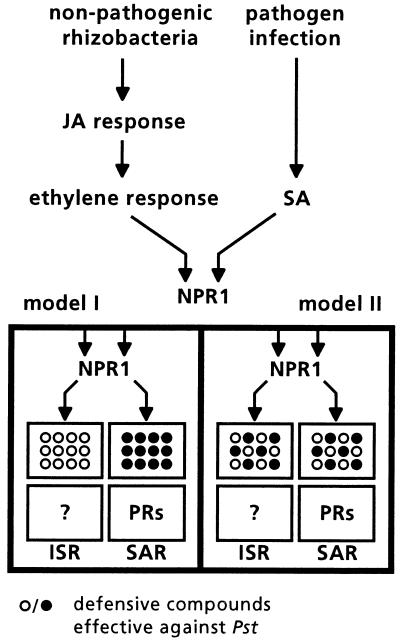Figure 5.
Model for the enhanced level of induced protection against Pst in Arabidopsis plants simultaneously expressing SAR and ISR. Pathogen-induced SAR is dependent on SA, requires NPR1, and is associated with PR gene expression (25, 54). WCS417r-mediated ISR requires responsiveness to JA and ethylene, also is dependent on NPR1 but is not associated with PR gene expression (35), indicating that downstream of NPR1 the pathways diverge. PR proteins that accumulate in plants expressing SAR are unlikely to contribute to induced resistance against P. syringae pathogens (53). Cross-talk between the SAR and the ISR pathway is absent. Simultaneous activation of SAR and ISR results in an additive effect on the level of protection against Pst. This is not accompanied by an increase in the expression of the Npr1 gene. Therefore, the enhanced level of induced protection against Pst must be accomplished through the parallel activation of so far unidentified defense responses that are all effective against Pst. The complementary effects on the level of protection could be achieved through the production of distinct (model I) or more of the same antibacterial gene products (model II). In both cases, simultaneous induction of SAR and ISR leads to enhanced levels of defensive components that are active against Pst. Question marks indicate unidentified defensive components.

